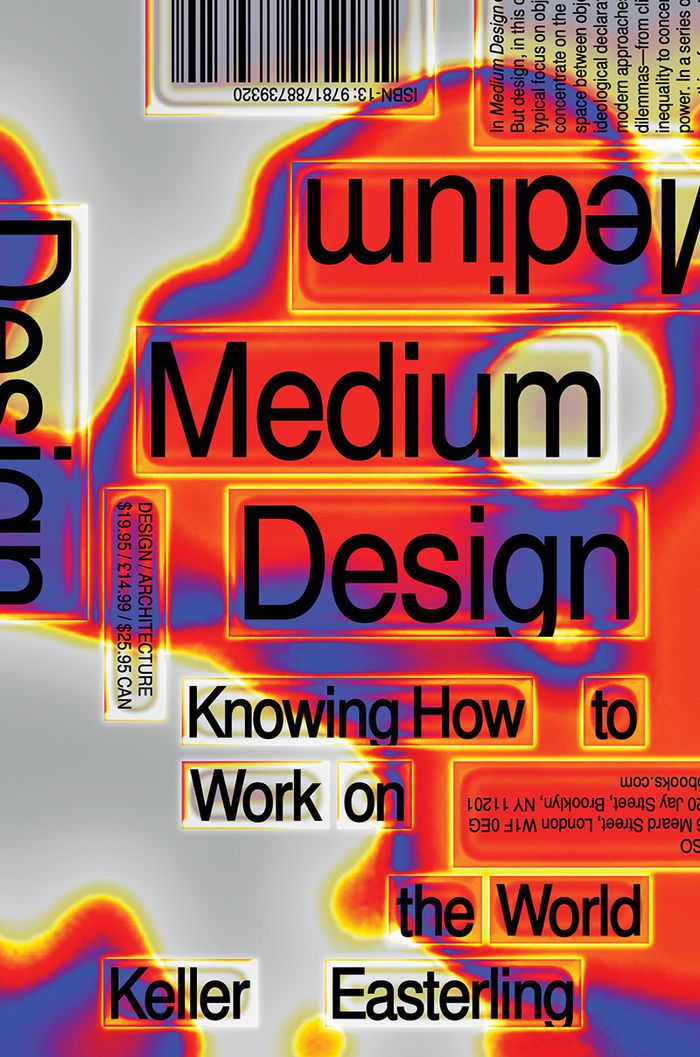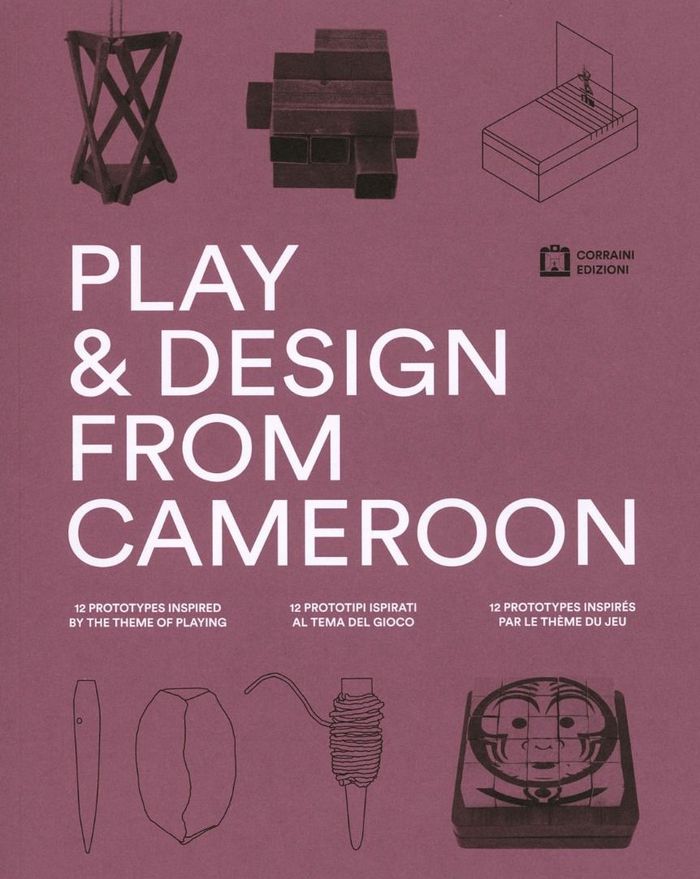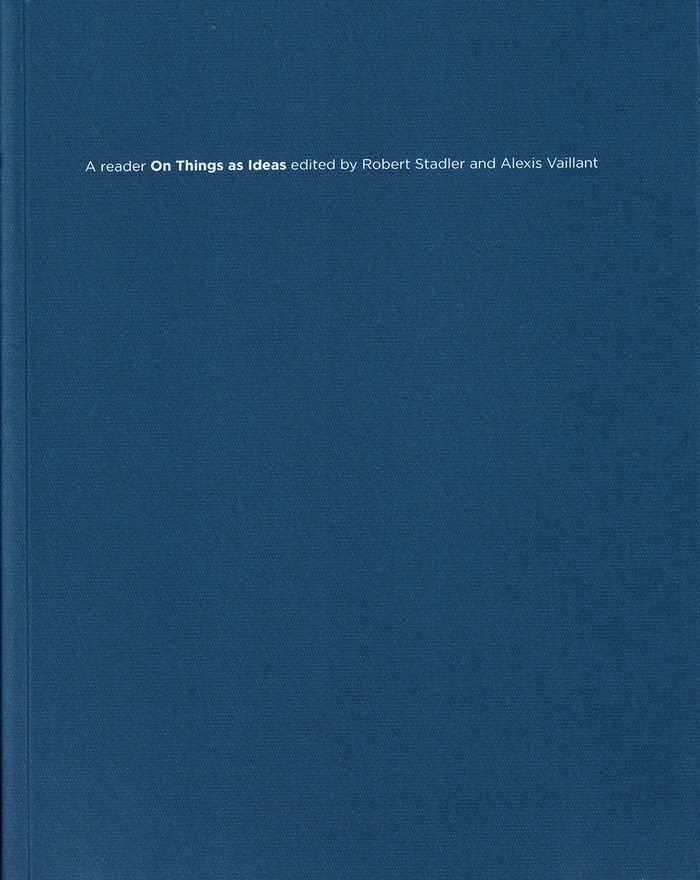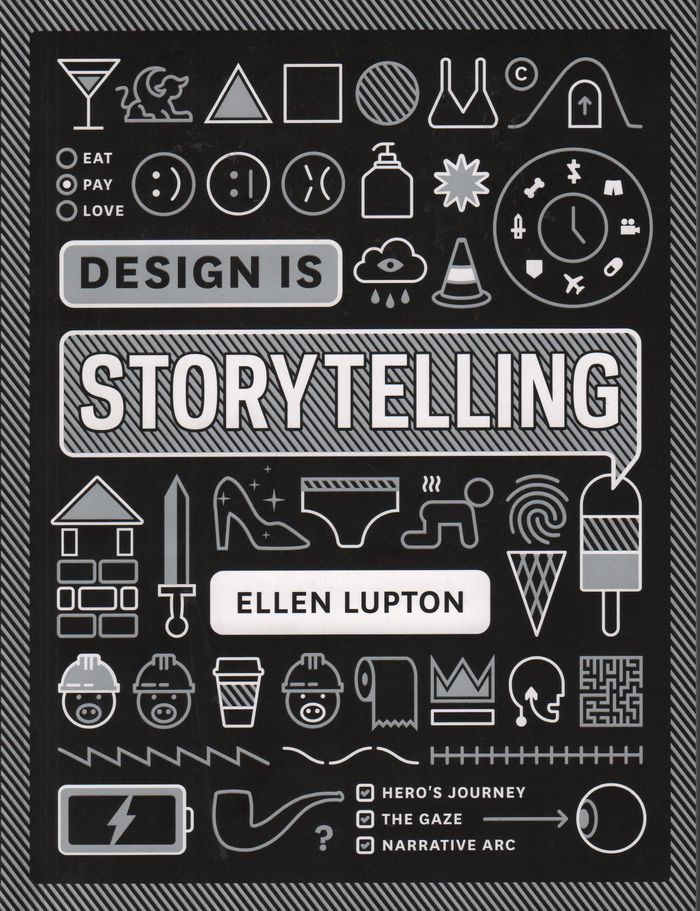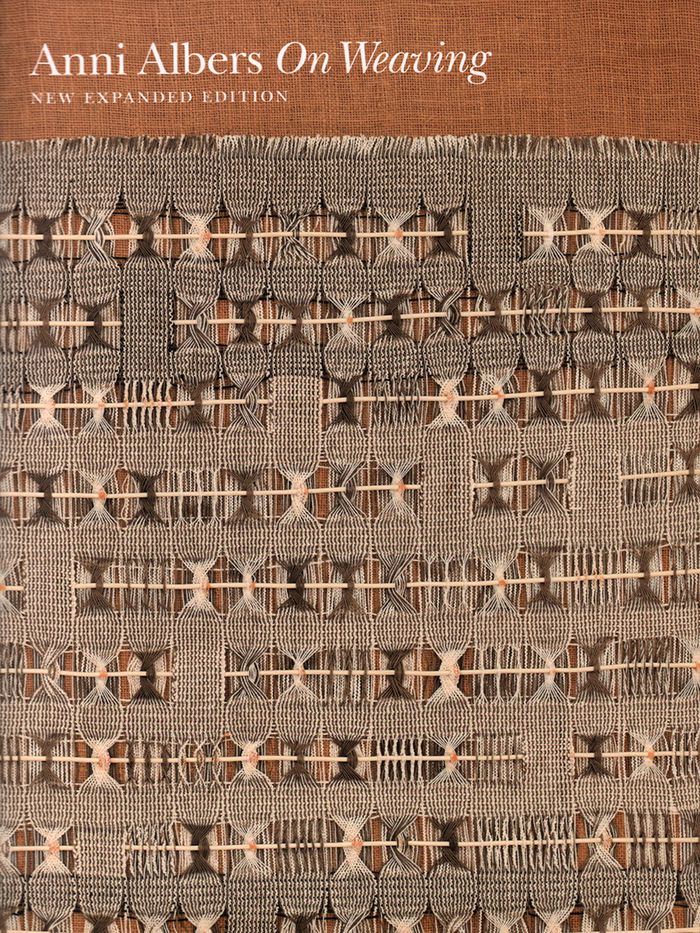$31.50
(disponible sur commande)
Résumé:
The thesis investigates emerging practices aimed at exploiting the World Wide Web as a space for popularizing historical knowledge. It questions the role of visual design in the communication of cultural heritage and historical information through online means, by addressing issues concerning data access, visualization, and interactive narration. A selection of(...)
Open history: designing the communication of historical knowledge through the Web
Actions:
Prix:
$31.50
(disponible sur commande)
Résumé:
The thesis investigates emerging practices aimed at exploiting the World Wide Web as a space for popularizing historical knowledge. It questions the role of visual design in the communication of cultural heritage and historical information through online means, by addressing issues concerning data access, visualization, and interactive narration. A selection of cuttingedge history websites, ranging from online exhibitions to virtual museum tours, from temporal maps to interactive documentaries, illustrates how the online environment is expanding and challenging conventional historical scholarship. The critical analyses, conducted through the lens of graphic, web, and information design, suggest the need for enhanced collaborations between historians and designers.
Théorie du design
$25.95
(disponible sur commande)
Résumé:
How do we formulate alternative approaches to the world’s unresponsive or intractable dilemmas—from climate cataclysm to inequality to concentrations of authoritarian power? Easterling argues that the search for solutions is a mistake. Instead, she offers the perspective of medium design, one that considers not only separate objects, ideas and events but also the space(...)
Medium design: knowing how to work on the world
Actions:
Prix:
$25.95
(disponible sur commande)
Résumé:
How do we formulate alternative approaches to the world’s unresponsive or intractable dilemmas—from climate cataclysm to inequality to concentrations of authoritarian power? Easterling argues that the search for solutions is a mistake. Instead, she offers the perspective of medium design, one that considers not only separate objects, ideas and events but also the space between them. This background matrix with all its latent potentials is profoundly underexploited in a culture that is good at naming things but not so good at seeing how they connect and interact. In case studies dealing with everything from automation and migration to explosive urban growth and atmospheric changes, ''Medium design'' looks not to new technologies for innovation but rather to sophisticated relationships between emergent and incumbent technologies. It does not try to eliminate problems but rather put them together in productive combinations. And it offers forms of activism for modulating power and temperament in organisations of all kinds.
Théorie du design
$26.95
(disponible sur commande)
Résumé:
John Hunt has witnessed again and again the power of original thinking to transform bothcompanies and individuals. Few can argue with Hunt's claim that it is ideas that move the world forward, and he articulates that anyone can play: there is no hierarchy to original thinking. By illustrating how to create space so ideas can breathe, this publication provides a lifeline(...)
The art of the idea: and how it can change your life
Actions:
Prix:
$26.95
(disponible sur commande)
Résumé:
John Hunt has witnessed again and again the power of original thinking to transform bothcompanies and individuals. Few can argue with Hunt's claim that it is ideas that move the world forward, and he articulates that anyone can play: there is no hierarchy to original thinking. By illustrating how to create space so ideas can breathe, this publication provides a lifeline to those who find themselves stuck in a rut.
Théorie du design
$48.00
(disponible sur commande)
Résumé:
During the ‘CAMon! Project’ workshop led by Italian architects Michele Brunello, Marco Brega, and Andrea Angeli’s, students at the Libre Académie des Beaux-arts Douala in Cameroon learned how simple games can also be a formidable design tool. Through Stefano Graziani’s colour photographs, this book features the 12 games resulting from the students' designs. The texts(...)
Play & design from Cameroon: 12 prototypes inspired by theme of playing
Actions:
Prix:
$48.00
(disponible sur commande)
Résumé:
During the ‘CAMon! Project’ workshop led by Italian architects Michele Brunello, Marco Brega, and Andrea Angeli’s, students at the Libre Académie des Beaux-arts Douala in Cameroon learned how simple games can also be a formidable design tool. Through Stefano Graziani’s colour photographs, this book features the 12 games resulting from the students' designs. The texts address the theme of playing from different perspectives, highlighting the relationship between design, education and cooperation. Each game — puppets, puzzles, masks, and mazes — has a strong empathic value, based on imagination and a broader exploration of reality.
Théorie du design
On things as ideas
$32.50
(disponible sur commande)
Résumé:
This collection of more than thirty texts, which were originally published between 1790 and the present day, explores man’s rich relationship with material things. Devised largely in response to the gradual breakdown of the divide between art and design that began over a century ago, this book sheds light on the ways that the concept of the thing as idea has been(...)
On things as ideas
Actions:
Prix:
$32.50
(disponible sur commande)
Résumé:
This collection of more than thirty texts, which were originally published between 1790 and the present day, explores man’s rich relationship with material things. Devised largely in response to the gradual breakdown of the divide between art and design that began over a century ago, this book sheds light on the ways that the concept of the thing as idea has been considered over time. Writers from different fields explore how things interact with materials, structures, and production processes while defining and registering the intangible qualities of the material world. Each author considers the different relationships between the context of a thing and its thingness, describing the ways in which things and ideas intersect. Contributions by Carl Andre, Charles Baudelaire, Walter Benjamin, Barbara Bloemink, Jan Boelen, Louise Bourgeois, Sheldon Cheney and Martha Candler Cheney, Alex Coles, Anthony Dunne and Fiona Raby, Hal Foster, Sigmund Freud, Dan Graham, Isabelle Graw, Sebastian Hackenschmidt and Dietmar Rübel, Graham Harman, G. W. F. Hegel, Martin Heidegger, Dave Hickey, Matthew Higgs, Donald Judd, Immanuel Kant, Frederick J. Kiesler, Sven Lütticken, Alessandro Mendini, W. J. T. Mitchell, Jasper Morrison, Bruno Munari, Robert Nickas, Alice Rawsthorn, Jeff Rian, Richard Rinehart, Anthony Vidler.
Théorie du design
Design is storytelling
$25.50
(disponible sur commande)
Résumé:
Design Is Storytelling explores the psychology of visual perception from a narrative point of view. Presenting dozens of tools and concepts in a lively, visual manner, this book will help any designer amplify the narrative power of their work. Use this book to stir emotions, build empathy, articulate values and convey action; to construct narrative arcs and create paths(...)
Design is storytelling
Actions:
Prix:
$25.50
(disponible sur commande)
Résumé:
Design Is Storytelling explores the psychology of visual perception from a narrative point of view. Presenting dozens of tools and concepts in a lively, visual manner, this book will help any designer amplify the narrative power of their work. Use this book to stir emotions, build empathy, articulate values and convey action; to construct narrative arcs and create paths through space; integrate form and language; evaluate a project’s storytelling power; and to write and deliver strong narratives.
Théorie du design
$70.00
(disponible sur commande)
Résumé:
'Craft Becomes Modern: The Bauhaus in the Making' looks at the Bauhaus from the perspective of this noisy activity — handcraft. No term was more fiercely disputed there. Although conceived as “laboratories for industry,” a great deal was still done by hand in the Dessau workshops. Workshops at the Bauhaus straddled the different priorities and practical realities at play,(...)
Craft becomes modern : the Bauhaus in the making
Actions:
Prix:
$70.00
(disponible sur commande)
Résumé:
'Craft Becomes Modern: The Bauhaus in the Making' looks at the Bauhaus from the perspective of this noisy activity — handcraft. No term was more fiercely disputed there. Although conceived as “laboratories for industry,” a great deal was still done by hand in the Dessau workshops. Workshops at the Bauhaus straddled the different priorities and practical realities at play, falling somewhere between factory and craft business, between free experimentation and industrial contract work. From this field of tension, the Bauhaus tried to define handcraft anew as a utopian pursuit that could coexist with industrial culture. The Bauhaus’ interest in industrialization has been thoroughly studied; the persistence of craft among its teachers and students much less so. Craft Becomes Modern surveys this aspect of the Bauhaus’ teaching and work, and puts it in historical context.
Théorie du design
Desk in exile
$19.95
(disponible sur commande)
Résumé:
When the Bauhaus moved to Dessau, the desk moved with it, landing in the director’s office, where it was used as a demonstration of a vision of a modern office culture. The desk took up residence temporarily in the Lawn Road Flats in London before following Gropius to Lincoln, Massachusetts, in 1938. It has remained in Lincoln since then and is currently in the Gropius(...)
Desk in exile
Actions:
Prix:
$19.95
(disponible sur commande)
Résumé:
When the Bauhaus moved to Dessau, the desk moved with it, landing in the director’s office, where it was used as a demonstration of a vision of a modern office culture. The desk took up residence temporarily in the Lawn Road Flats in London before following Gropius to Lincoln, Massachusetts, in 1938. It has remained in Lincoln since then and is currently in the Gropius family’s private home. An index of the changing fortunes of the Bauhaus, Gropius’ desk itself becomes an actor in a complex history of changing locations and social environments. Desk in Exile traces the trajectory of this uniquely weighted object, offering a model of an object-based history of exile. Part of Spector Books’ series of readers on individual aspects of Bauhaus design, this volume comes out of the research and curatorial work carried out by the Bauhaus Lab 2016.
Théorie du design
$61.50
(disponible sur commande)
Résumé:
Written by one of the twentieth century’s leading textile artists, this illustrated book is a meditation on the art of weaving, its history, its tools and techniques, and its implications for modern design. First published in 1965, "On weaving" bridges the transition between handcraft and the machine-made, highlighting the importance of material awareness and the creative(...)
On weaving: new expanded edition
Actions:
Prix:
$61.50
(disponible sur commande)
Résumé:
Written by one of the twentieth century’s leading textile artists, this illustrated book is a meditation on the art of weaving, its history, its tools and techniques, and its implications for modern design. First published in 1965, "On weaving" bridges the transition between handcraft and the machine-made, highlighting the importance of material awareness and the creative leaps that can occur when design problems are tackled by hand.
$39.95
(disponible sur commande)
Résumé:
The peculiar arrangement of the psychoanalyst’s office for an analytic session seems inexplicable. The analyst sits in a chair out of sight while the patient lies on a couch facing away. It has been this way since Freud, although, as Nathan Kravis points out in On the Couch, this practice is grounded more in the cultural history of reclining posture than in empirical(...)
On the couch : a repressed history of the analytic couch from Plato to Freud
Actions:
Prix:
$39.95
(disponible sur commande)
Résumé:
The peculiar arrangement of the psychoanalyst’s office for an analytic session seems inexplicable. The analyst sits in a chair out of sight while the patient lies on a couch facing away. It has been this way since Freud, although, as Nathan Kravis points out in On the Couch, this practice is grounded more in the cultural history of reclining posture than in empirical research. Kravis, himself a practicing psychoanalyst, shows that the tradition of recumbent speech wasn’t dreamed up by Freud but can be traced back to ancient Greece, where guests reclined on couches at the symposion (a gathering for upper-class males to discuss philosophy and drink wine), and to the Roman convivium (a banquet at which men and women reclined together). From bed to bench to settee to chaise-longue to sofa: Kravis tells how the couch became an icon of self-knowledge and self-reflection as well as a site for pleasure, privacy, transgression, and healing.

